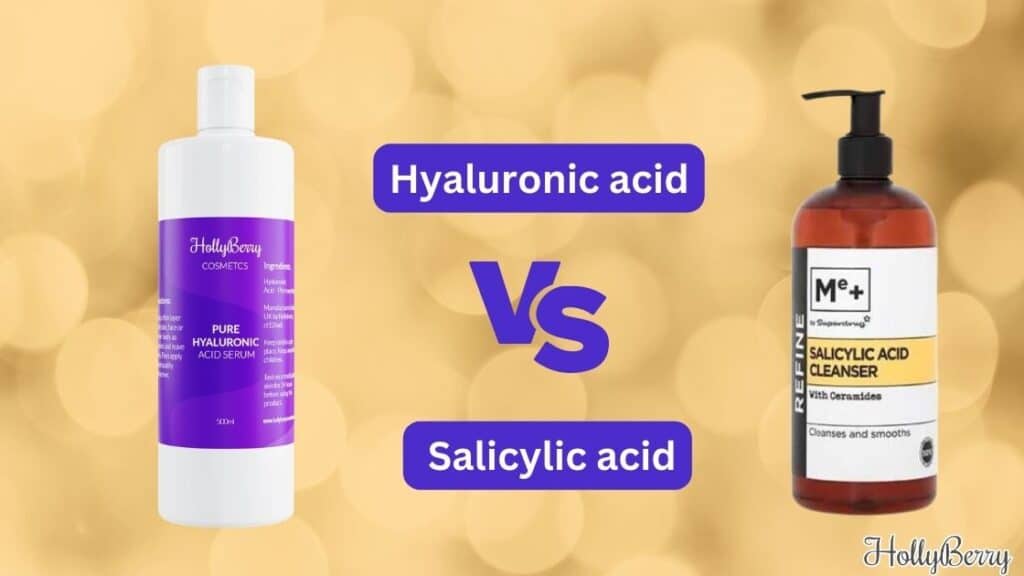
What is hyaluronic acid and what are its benefits for the skin?
Hey there! Have you ever heard of hyaluronic acid? It’s a naturally occurring substance in our skin that helps to keep it hydrated and plump. As we age, our bodies produce less and less of it, which can lead to dry, dull-looking skin.
But don’t worry, you can still get the benefits of hyaluronic acid through skincare products! When applied topically, it can help to deeply moisturize the skin and plump up fine lines and wrinkles. It can also improve the skin’s overall texture and tone.
It’s especially great for people with dry or mature skin, but can be beneficial for all skin types. Some people even use it as a supplement in tablet or liquid form. It can be found in many different forms, like a serum, cream or even in hydrogels.
It’s a gentle yet powerful ingredient that can help to give your skin a boost of hydration and leave it looking healthy and radiant.
What is salicylic acid and what are its benefits for the skin?
Salicylic acid is a type of beta hydroxy acid (BHA) that is derived from willow bark. It’s a great ingredient to look for if you’re dealing with acne-prone skin or clogged pores.
Salicylic acid works by penetrating deep into the pores and exfoliating the skin from within. This helps to unclog pores, remove dead skin cells, and reduce inflammation. It also has anti-ageing properties as it can boost collagen production, making it a great ingredient for people of all ages.
It’s perfect for those who have oily or acne-prone skin, but it can also be beneficial for those with dry or sensitive skin. It’s important to use it in a low concentration and combined with other ingredients that can help hydrate the skin to avoid dryness or irritation.
You can find it in cleansers, toners, spot treatments and even in face masks. Incorporating salicylic acid into your skincare routine can help to keep your skin clear, smooth and youthful-looking.
How do hyaluronic acid and salicylic acid differ in terms of their uses and effectiveness?
Hey there! Hyaluronic acid and salicylic acid are both amazing ingredients for the skin, but they work in different ways.
Hyaluronic acid is a humectant, which means it helps to attract and retain moisture in the skin, making it great for hydration and plumping up fine lines and wrinkles. It is often used as a moisturizer, but also it can be used as a supplement as well.
On the other hand, salicylic acid is a type of beta hydroxy acid (BHA) that works by exfoliating the skin from within, unclogging pores and removing dead skin cells. It’s great for those with acne-prone or oily skin, but it can also be beneficial for people with dry or sensitive skin.
So while hyaluronic acid is great for hydration and anti-ageing, salicylic acid is great for exfoliation and treating acne.
It’s important to use them together in a skincare routine, as they can complement each other, hyaluronic acid can provide hydration and nourishment while Salicylic acid can help with exfoliation, unclogging pores and treating acne.
You can use hyaluronic acid in your morning routine, and salicylic acid in your evening routine, or alternatively, you can look for products that combine them for a more comprehensive skincare routine.
Are there any potential side effects or precautions when using hyaluronic acid or salicylic acid?
Both hyaluronic acid and salicylic acid are generally considered safe for most people to use in skincare products, but as with any skincare ingredient, there are some precautions to keep in mind.
When it comes to hyaluronic acid, it’s a very gentle ingredient, and side effects are rare. However, if you have sensitive skin, it’s always a good idea to do a patch test before using any new product. Also, in rare cases, people might develop an allergic reaction to hyaluronic acid.
Salicylic acid is a bit stronger than hyaluronic acid but still considered safe to use. However, it can cause dryness, irritation or redness if used in high concentrations or if your skin is sensitive.
It’s important to start using it in low concentrations and gradually increase it. It’s also important to use it in combination with hydrating ingredients to avoid dryness or irritation.
It’s also important to keep in mind that like retinol, salicylic acid can increase sun sensitivity, so it’s important to wear sunscreen daily if you’re using products containing it.
Overall, both hyaluronic acid and salicylic acid are great ingredients that can provide many benefits for the skin, but it’s always a good idea to be cautious and aware of any potential side effects or precautions when using them.
How can hyaluronic acid and salicylic acid be used together in a skincare routine?
Hyaluronic acid and salicylic acid are both amazing ingredients for the skin, and when used together, they can complement each other to give your skin an extra boost of hydration and exfoliation.
Hyaluronic acid can be used in the morning as a moisturizer, to keep your skin hydrated and plump all day long. You can also use it as a supplement in tablet or liquid form. It can also be used in serums, creams or even in hydrogels.
Salicylic acid can be used in the evening as a cleanser or toner, to help unclog pores and remove dead skin cells while you sleep. You can also use it in spot treatments or face masks to target specific areas of concern.
As I have already said it is important to keep in mind that salicylic acid can increase sun sensitivity, so it’s important to wear sunscreen daily if you’re using products containing it.
By incorporating both hyaluronic acid and salicylic acid into your skincare routine, you’ll be giving your skin the hydration it needs to look plump and youthful, while also providing the exfoliation it needs to stay clear and smooth.
It’s a great way to achieve a comprehensive skincare routine that can address multiple skin concerns.
So, go ahead and give it a try! Your skin will thank you!


